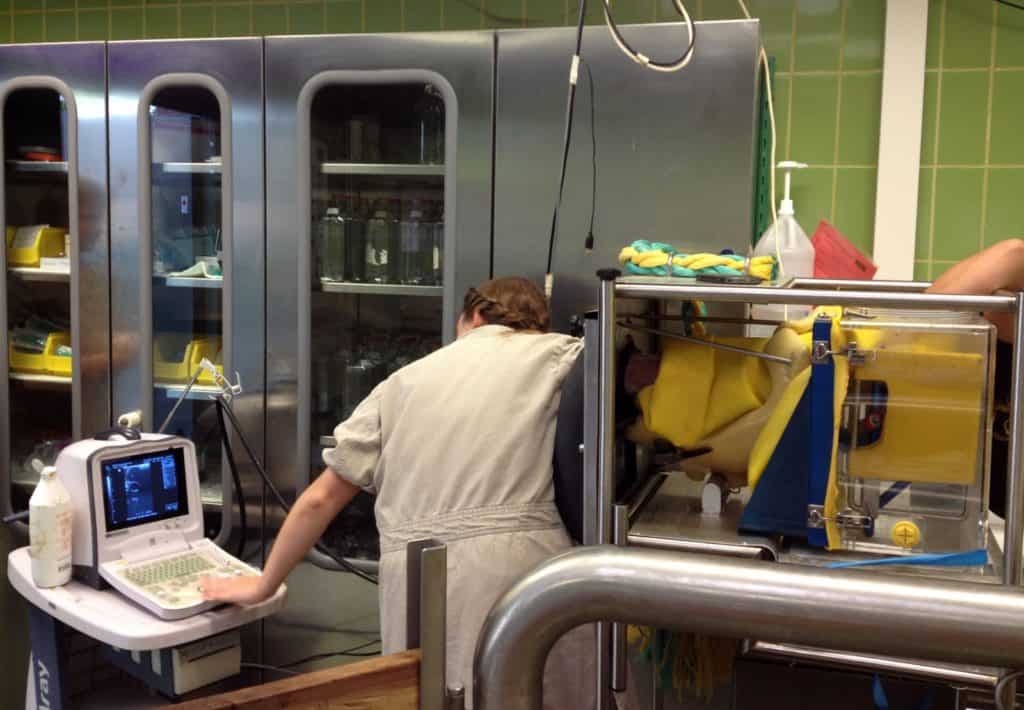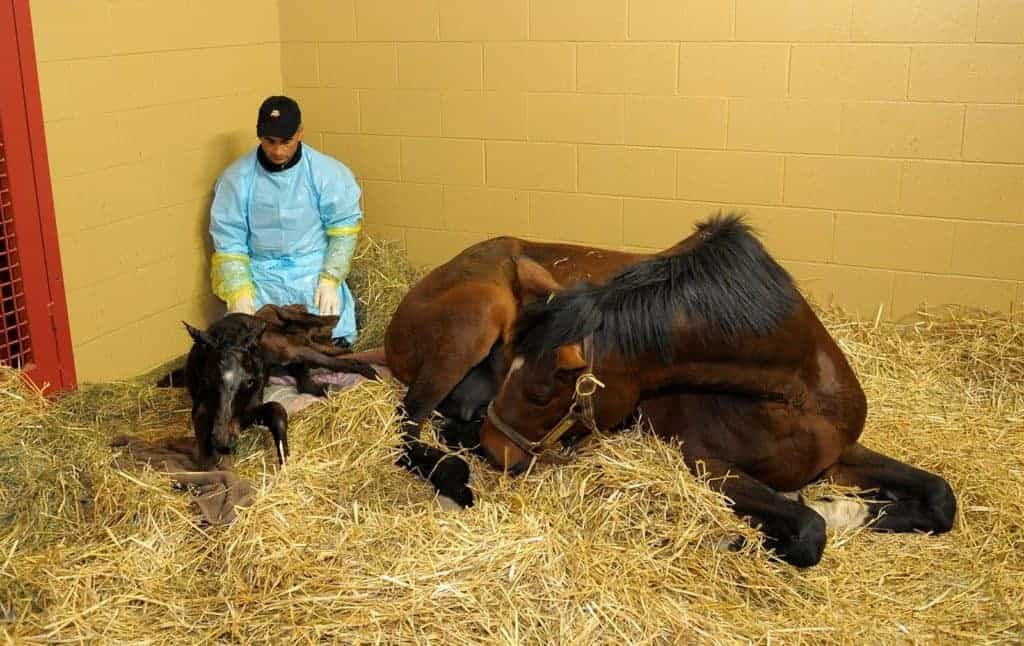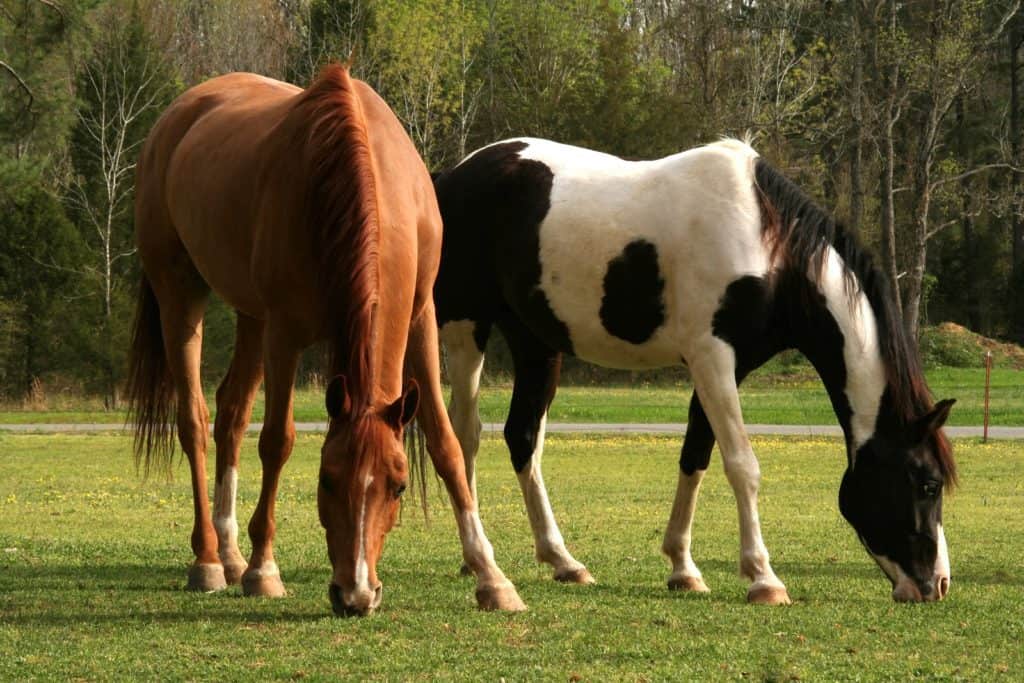
Study: Some Mares Find Rectal Ultrasounds Stressful
Nonlactating Thoroughbred mares perceived transrectal ultrasound exams as modest temporary stressors.

Nonlactating Thoroughbred mares perceived transrectal ultrasound exams as modest temporary stressors.

Researchers recently tested an equine gynecological exam simulator for its suitability in veterinary training programs.

Jennifer Linton, VMD, will describe what to expect when your horse is expecting on April 5 at the New Bolton Center.

Equine reproduction specialist Dr. Etta Bradecamp overviews obstacles related to breeding performance mares and stallions.

Researchers are hoping to make the preferred embryo freezing procedure available to more breeders.

Placentitis can wreak havoc for mare owners, so it’s important for vets to have a good understanding of the condition.

A recap of studies on topics ranging from prostaglandin treatment of mares to semen quality in stallions.

This marks the first time such a connection has been made in any mammalian species.

Longer light exposure appears to have numerous effects, from prompting coat shedding to increasing bone mineral density.

The new procedures could make sterile mares with XY sex chromosomes easier and less expensive for breeders to detect.

Learn how to manage these challenging cases and improve the mare’s chance of producing a live foal.

Light drives the internal clocks of all organisms. Here’s how it impacts horses, from broodmares to equine athletes.

Retained placenta, lochiometra, and injuries to the perineum were the most common puerperal (after birthing) issues.

While we can’t prevent all abortions, knowing the risks can help us prepare for and, in some cases, reduce the hazards.

Infertile mare? Deceased stallion? No problem! Equine reproduction is now high-tech enough to overcome these hurdles.

Genetic testing reveals differences in an individual’s DNA that result in traits from coat color to muscle function.
Stay on top of the most recent Horse Health news with
"*" indicates required fields